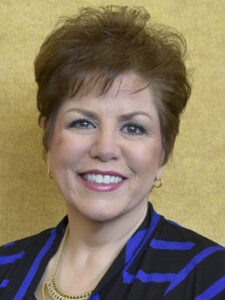
The most important thing that diabetes educators and caregivers can give to their patients is hope, according to this year’s Outstanding Educator in Diabetes Award recipient, Virginia Valentine, APRN, BC-ADM, CDE, FAADE, who discussed the challenges of overcoming the stigma of diabetes and obesity in her Scientific Sessions address on Saturday.
Ms. Valentine is a diabetes specialist with Clinica La Esperanza in Alburquerque, NM, where she manages a wide variety of clinical challenges in a primary care group. She also holds faculty appointments with the University of New Mexico and serves as clinician faculty for the Endocrinology TeleECHO Clinic, which trains and supports primary care providers in rural and underserved communities to improve their knowledge and skill in endocrinology care.
“I’ve had type 2 diabetes for 39 years. I was really overweight and, in 2002, I had an epiphany that I really needed to lose weight. You’d think, having already been a diabetes educator for 20 years, that I would have already known that,” Ms. Valentine said. “So I started working really hard, and one of the things that I discovered after losing weight is that I looked thin on the outside, but on the inside I was still a 250-pound woman.”
After losing weight, Ms. Valentine said she had another important epiphany.
“I was at a national meeting with some colleagues and I heard them talking negatively about someone across the room who was really overweight and I could not believe it. I realized that they had probably been doing it all along, but I had just not been in on the conversations,” Ms. Valentine said. “That’s when I discovered stigma and bias in a way that I never knew about.”
Stigma, she noted, has been defined as labeling and identifying human differences via stereotyping, in which the labeled person is linked to undesirable characteristics. Stigma describes physical characteristics or character traits that mark the bearer as having lower social value.
“It’s an even bigger problem when clinicians hold these attitudes because it can result in patients avoiding care, stress, mistrust of the provider, poor participation in a therapeutic regimen, and poor communication between patient and provider,” Ms. Valentine said. “Diabetes stigma refers to experiences of negative feelings, such as exclusion, rejection, and blame, such as ‘you brought this on yourself,’ and the shame in thinking that you should have done better or you’re not good enough.”
The good news, Ms. Valentine said, is that stigma is 100 percent curable.
“The first step is to recognize that the stigma exists and resist the urge to blame and shame,” she said. “If we believe that our patients are going to do better and if we believe that everyone has the capacity for achieving target control, we can make a huge difference. We must approach our patients with intention and the expectation that they will be able to achieve optimal health.”